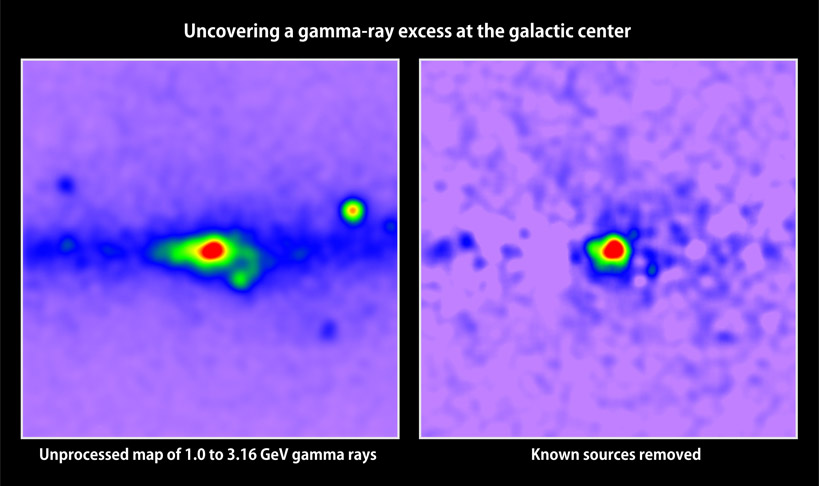Image List
-

This animation zooms into an image of the Milky Way, shown in visible light, and superimposes a gamma-ray map of the galactic center from NASA's Fermi Space Telescope. Raw data transitions to a view with all known sources removed, revealing a gamma-ray excess hinting at the presence of dark matter.
NASA Goddard; A. Mellinger, CMU; T. Linden, Univ. of Chicago -

At left is a map of gamma rays with energies between 1 and 3.16 GeV detected in the galactic center by the Fermi Space Telescope; red indicates the greatest number. Removing all known gamma-ray sources (right) reveals excess emission that may arise from dark matter annihilations.
T. Linden, Univ. of Chicago -

At left is a map of gamma rays with energies between 1 and 3.16 GeV detected in the galactic center by the Fermi Space Telescope; red indicates the greatest number. Prominent pulsars are labeled. Removing all known gamma-ray sources (right) reveals excess emission that may arise from dark matter annihilations.
T. Linden, Univ. of Chicago